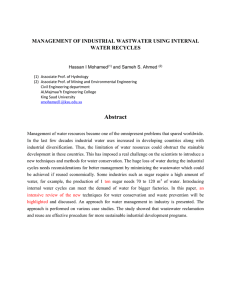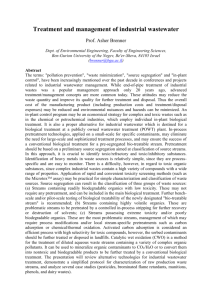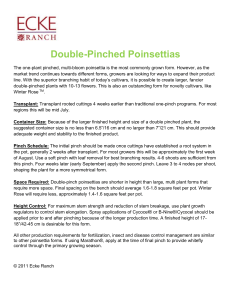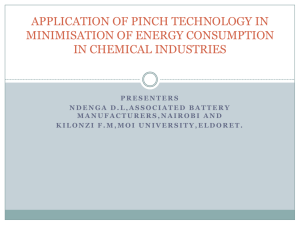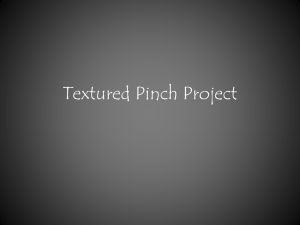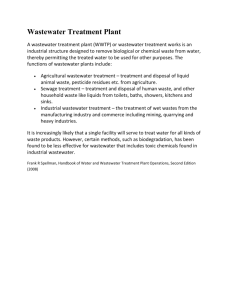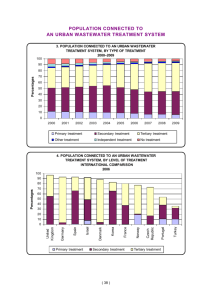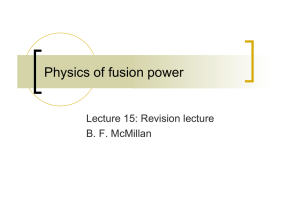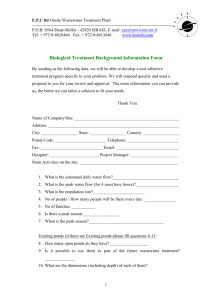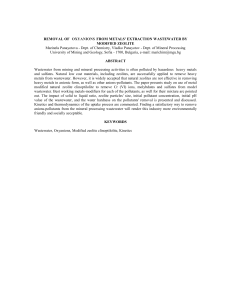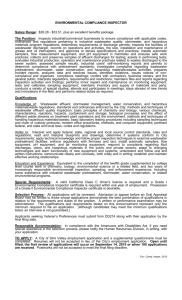design of wastewater reduction and water conservation systems by
advertisement
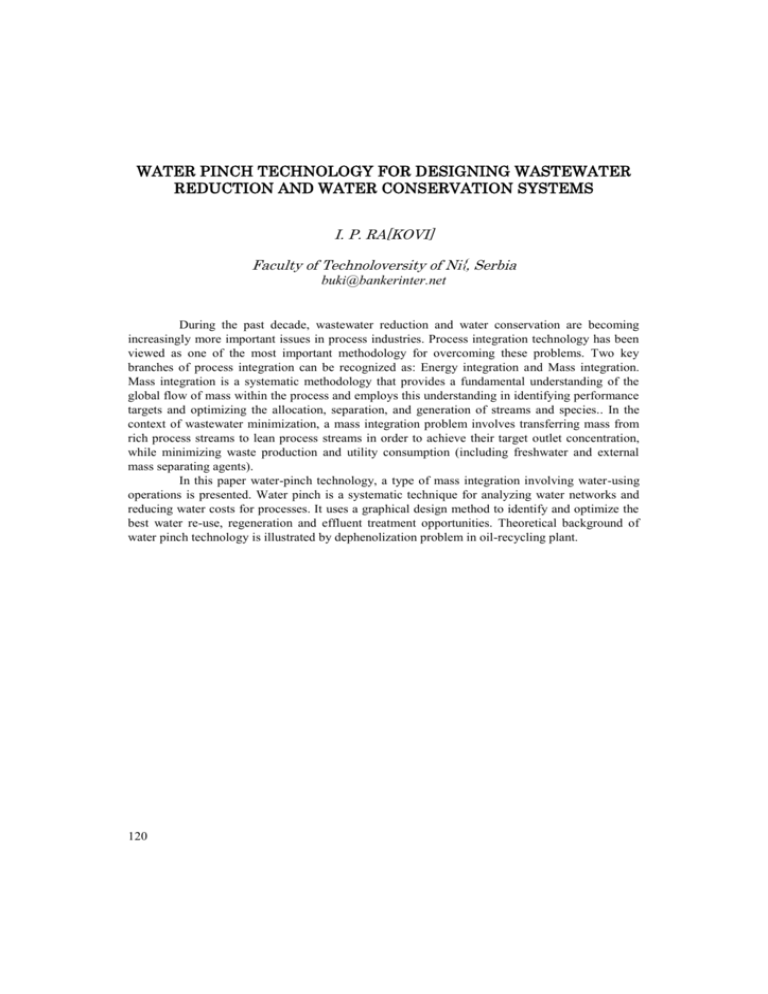
WATER PINCH TECHNOLOGY FOR DESIGNING WASTEWATER
REDUCTION AND WATER CONSERVATION SYSTEMS
I. P. RA[KOVI]
Faculty of Technoloversity of Ni{, Serbia
buki@bankerinter.net
During the past decade, wastewater reduction and water conservation are becoming
increasingly more important issues in process industries. Process integration technology has been
viewed as one of the most important methodology for overcoming these problems. Two key
branches of process integration can be recognized as: Energy integration and Mass integration.
Mass integration is a systematic methodology that provides a fundamental understanding of the
global flow of mass within the process and employs this understanding in identifying performance
targets and optimizing the allocation, separation, and generation of streams and species.. In the
context of wastewater minimization, a mass integration problem involves transferring mass from
rich process streams to lean process streams in order to achieve their target outlet concentration,
while minimizing waste production and utility consumption (including freshwater and external
mass separating agents).
In this paper water-pinch technology, a type of mass integration involving water-using
operations is presented. Water pinch is a systematic technique for analyzing water networks and
reducing water costs for processes. It uses a graphical design method to identify and optimize the
best water re-use, regeneration and effluent treatment opportunities. Theoretical background of
water pinch technology is illustrated by dephenolization problem in oil-recycling plant.
120
